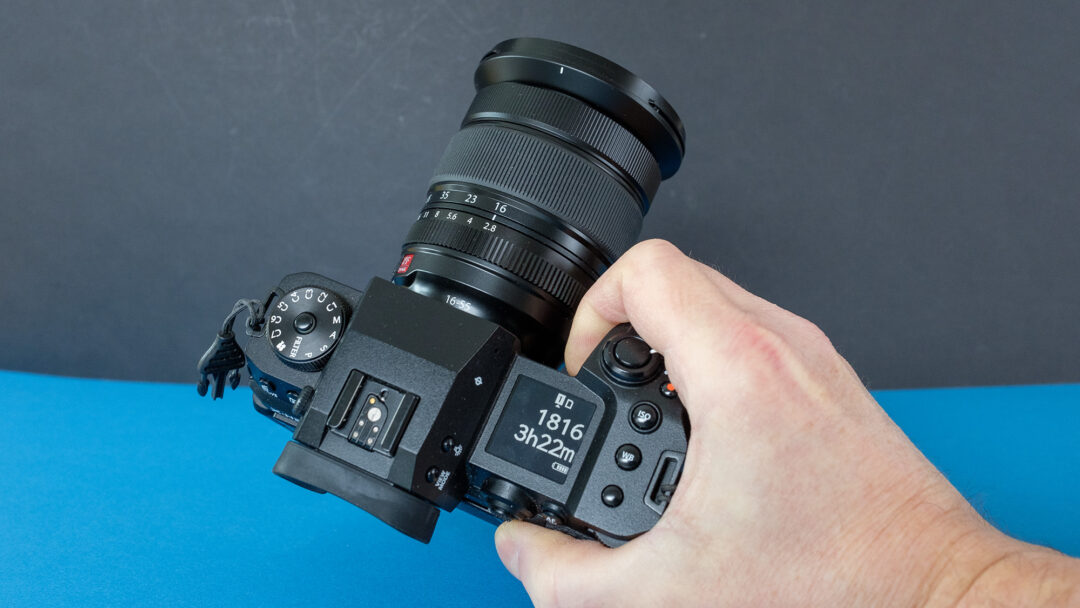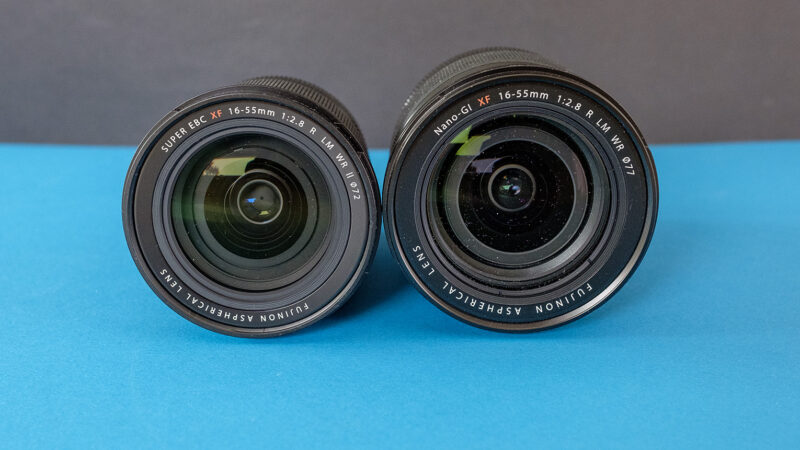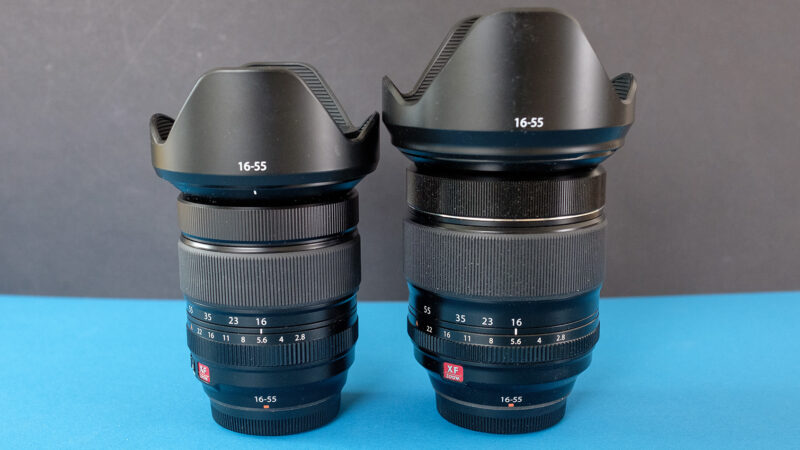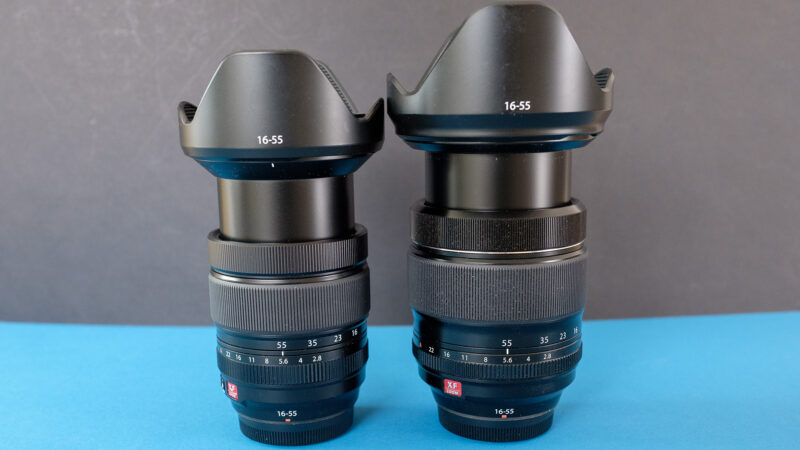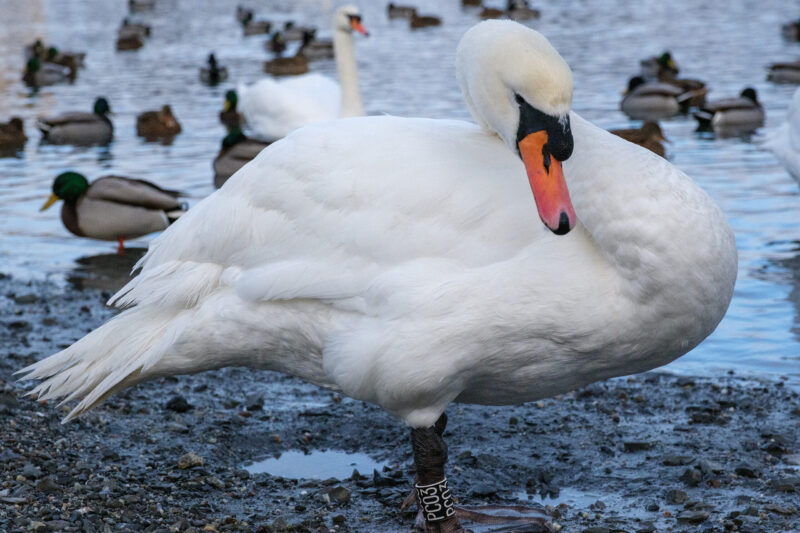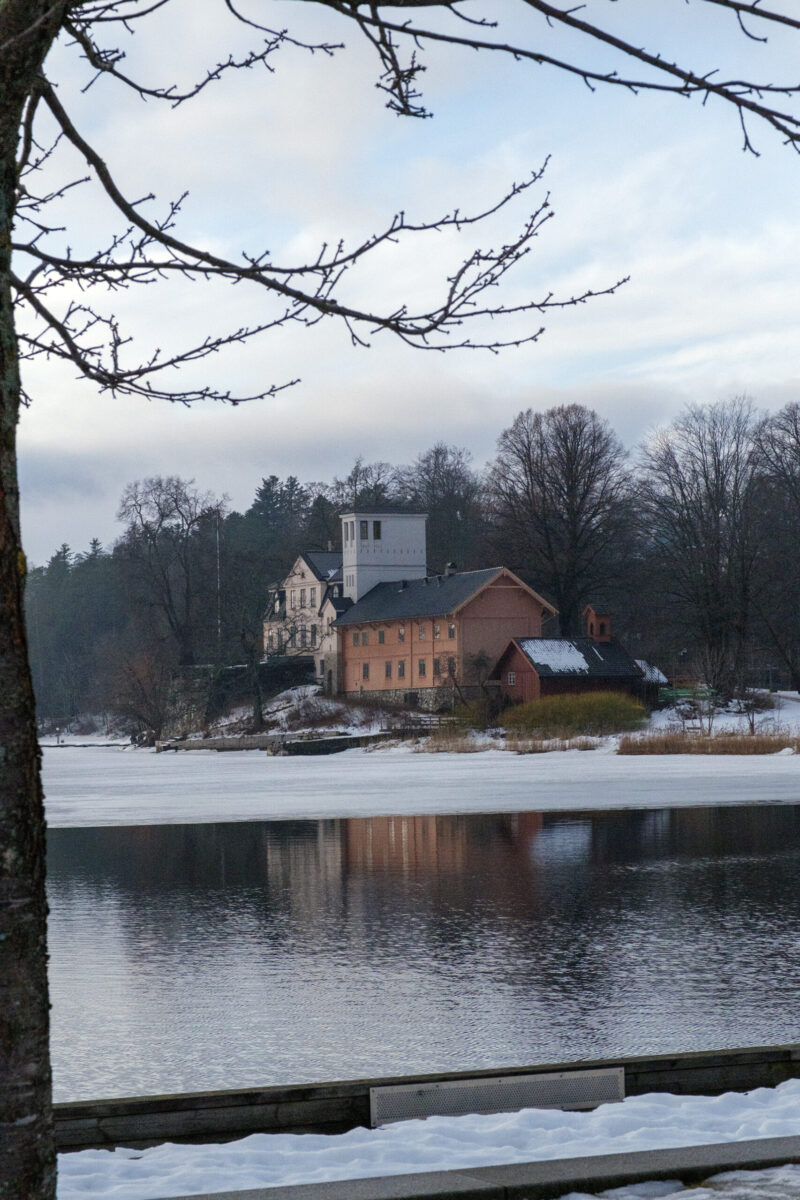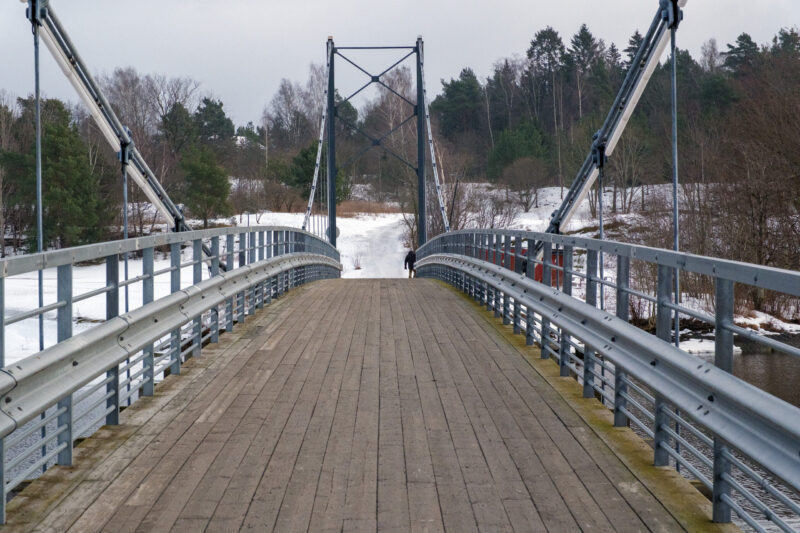10 years after Fujifilm launched its brightest normal zoom for the X system, a successor has surprisingly arrived. Same focal length and brightness, but with redesigned optics and mechanics.
On the one hand, it was a bit strange that they thought of making an XF 16-55mm II, but on the other hand, the test shows that it wasn’t a bad idea at all.
The aging XF 16-55mm is big and heavy. Definitely the heaviest normal zoom made for the APS-C format that Fujifilm uses. But it’s sharp, quite characterful, mechanically solid and weather-sealed. The new XF 16-55mm F2.8 R LM WR II is just as bright over the same focal length range. But how did Fujifilm manage to shrink the zoom while maintaining image quality? The answer is a completely new construction.
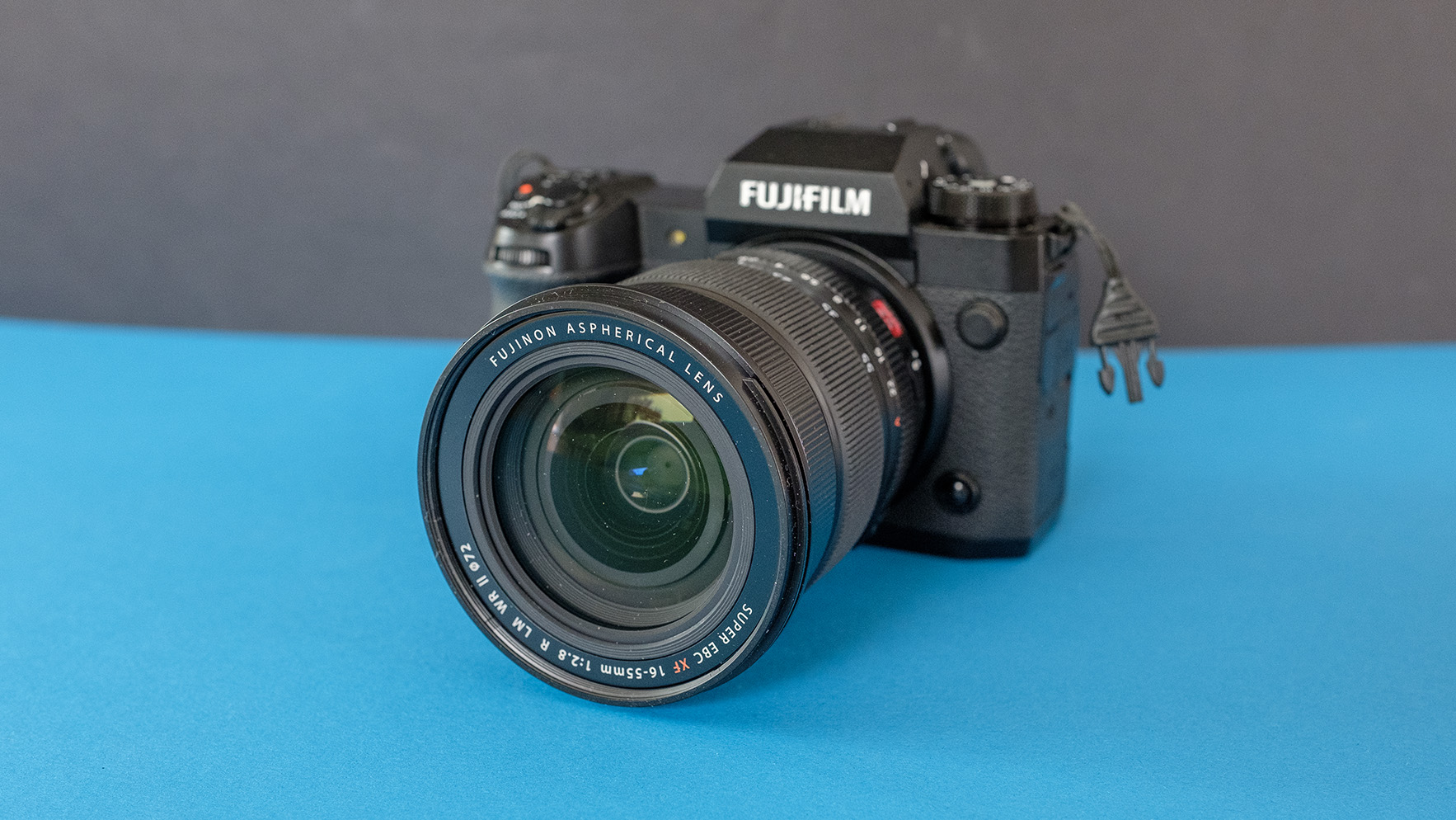
Facts about the new XF 16-55mm II:
- 37 percent lighter than its predecessor
- Equivalent to 24-84mm in 35 format
- f/2.8 across the entire focal length range
- 0.02s autofocus response
- 30 cm close focusing distance
- 11 rounded aperture blades
- Stepless aperture selection switch
- Weather sealed
Okay, the predecessor is also weather sealed. But it’s over 10 cm long and weighs 655 grams. Plus the hood. The new one is one cm shorter and 245 grams lighter.
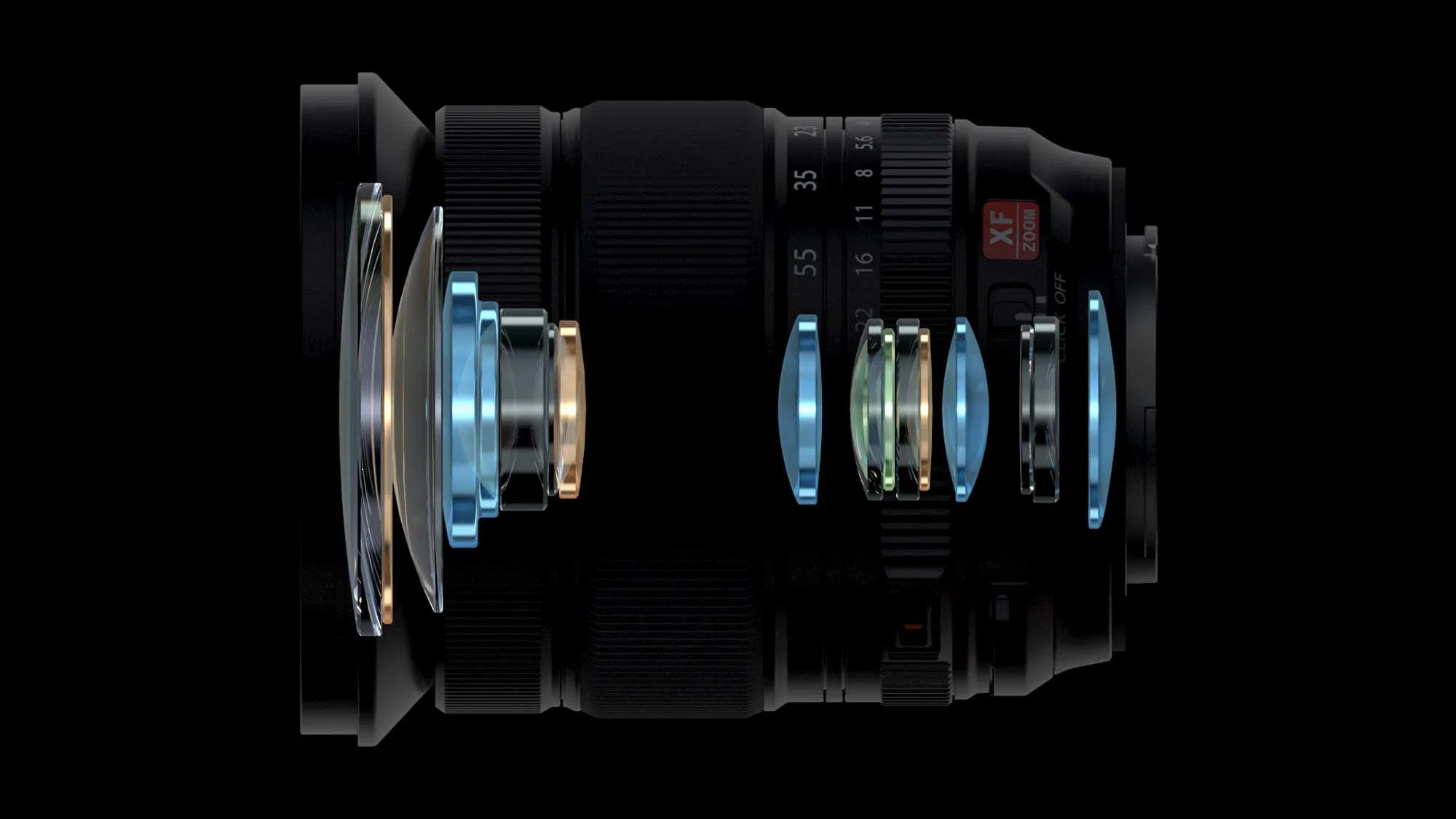
This has been achieved by removing one of the lens elements and reducing the diameter of several of them. There are 16 elements compared to 17 in the predecessor, and Fujifilm has added an extra aspherical element to the new design. This includes four aspherical elements, three ED lenses and one Super ED (Extra Dispersion). Which reduces chroma errors.
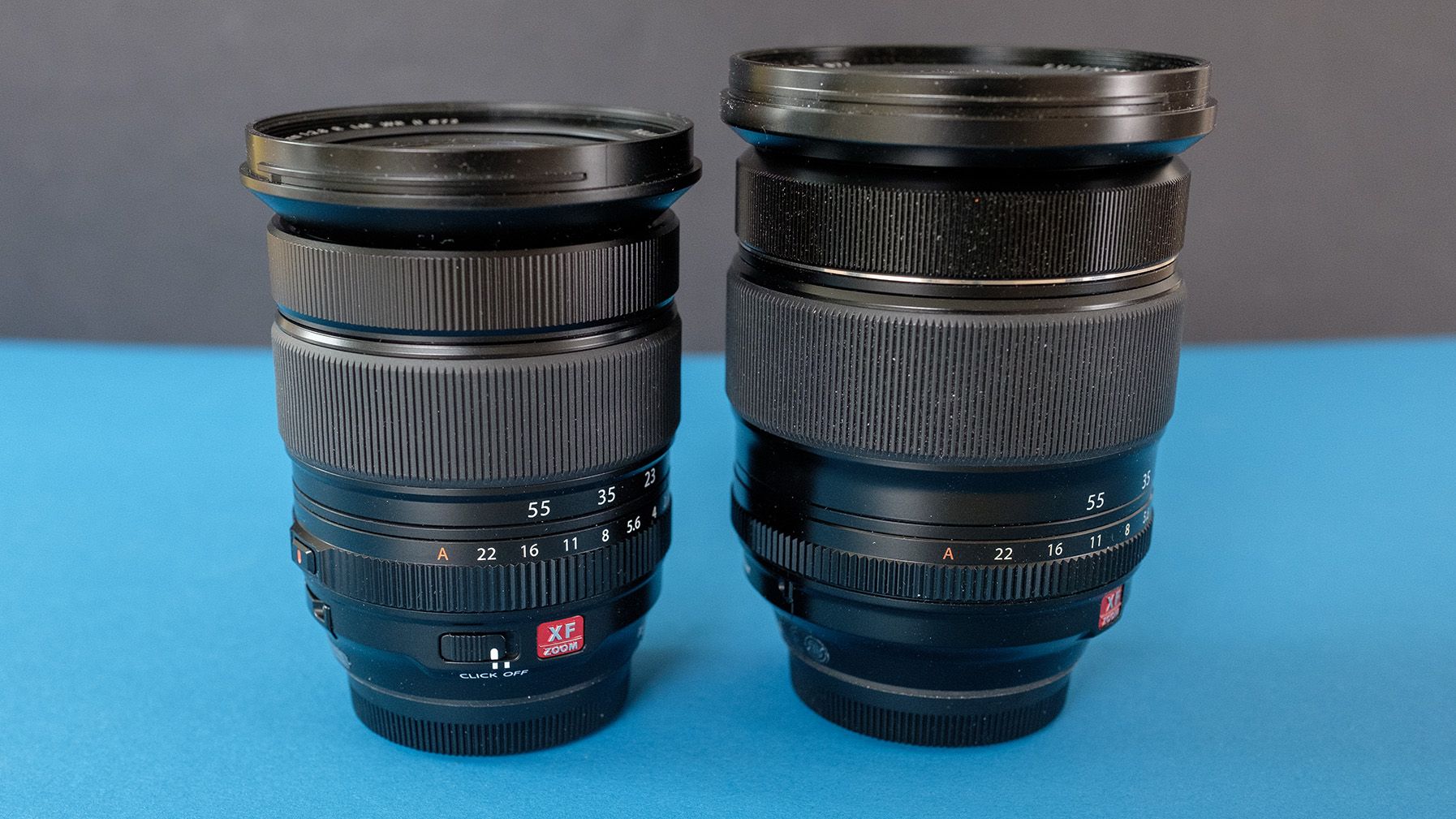
The aperture is new and now has 11 rounded iris blades, and the lens has Fujifilm’s linear focusing motor and, according to Fujifilm, a focus response of 0.2 seconds.
A small detail for some, a big one for videographers: the aperture ring has a switch that turns off the clicks when you change the aperture value. This makes for silent and seamless aperture changes on the fly.
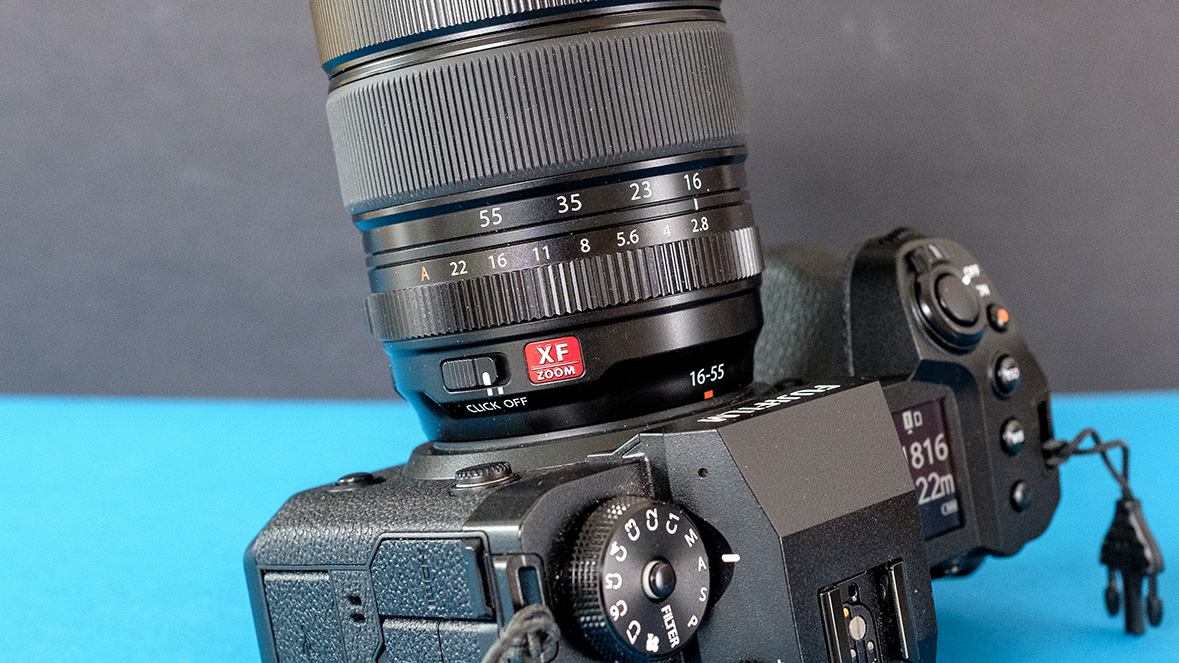
The lens is weather sealed in 12 places, making it a worthy partner for Fuji’s professional system cameras in the X-Pro, X-T and XH series.
Fuji hasn’t found room for an integrated optical image stabilizer, but both the X-T and XH series have it built-in. However, for those using an X-Pro series camera, you will lose the image stabilization.
It should be noted that the predecessor does not have integrated image stabilization either.
Focus precision
The first thing I noticed was how much faster autofocus responded with the XF 16-55mm II on an X-H2. Focus locked instantly when I pressed the shutter release and searched, found and locked onto the subject slightly faster than with the XF 16-55mm.
With the versatility of a normal zoom, autofocus can be a challenge for those who need an autofocus they can rely on in demanding situations. It’s not so critical for those shooting landscapes, people or travel documents. But it’s good to say that the XF 16-55mm II has improved in an area that matters a lot to many.
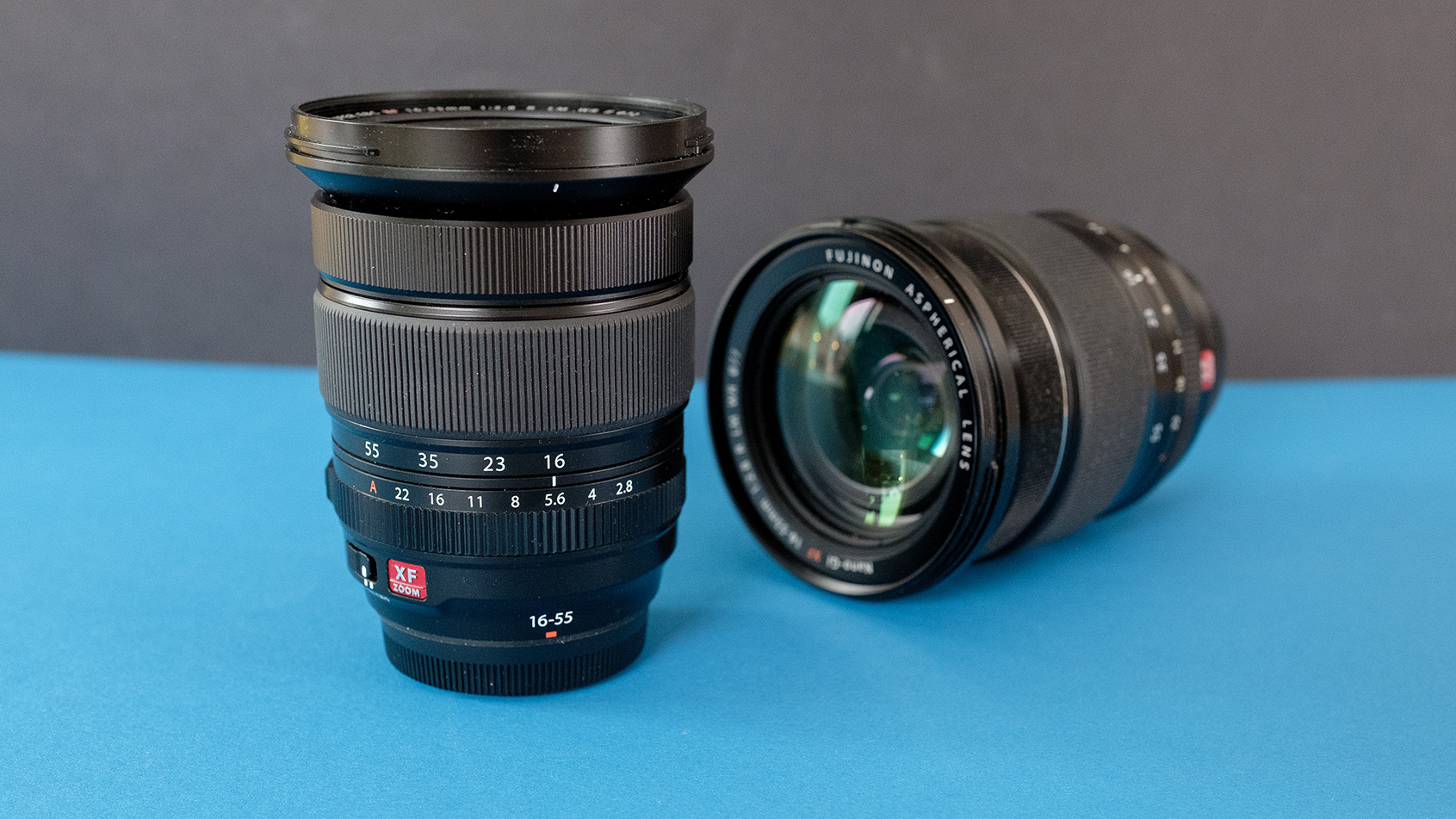
Optical performance
Here too, the front element has become smaller and the filter diameter has been reduced to 72 mm. This also makes the XF 16-55mm II slightly more versatile. This is because it’s the same filter diameter as the XF 10-24mm F4 R OIS WR wide-angle zoom and the XF 50-140mm F2.8 R LM OIS WR telephoto zoom. This means you can have all the filters you need in the same diameter if that’s the setup you choose for an X camera.
The most interesting thing about the new XF 16-55mm II is of course whether it’s optically better than its predecessor, and the answer is no. It’s sharper, but only marginally sharper. But there is a difference, at least if you look for it, and it has no issues with the 40 Mp resolution of an X-H2 or X-T5. For those who occasionally use the camera in high-resolution mode, the difference is even greater, but it’s still not night and day.
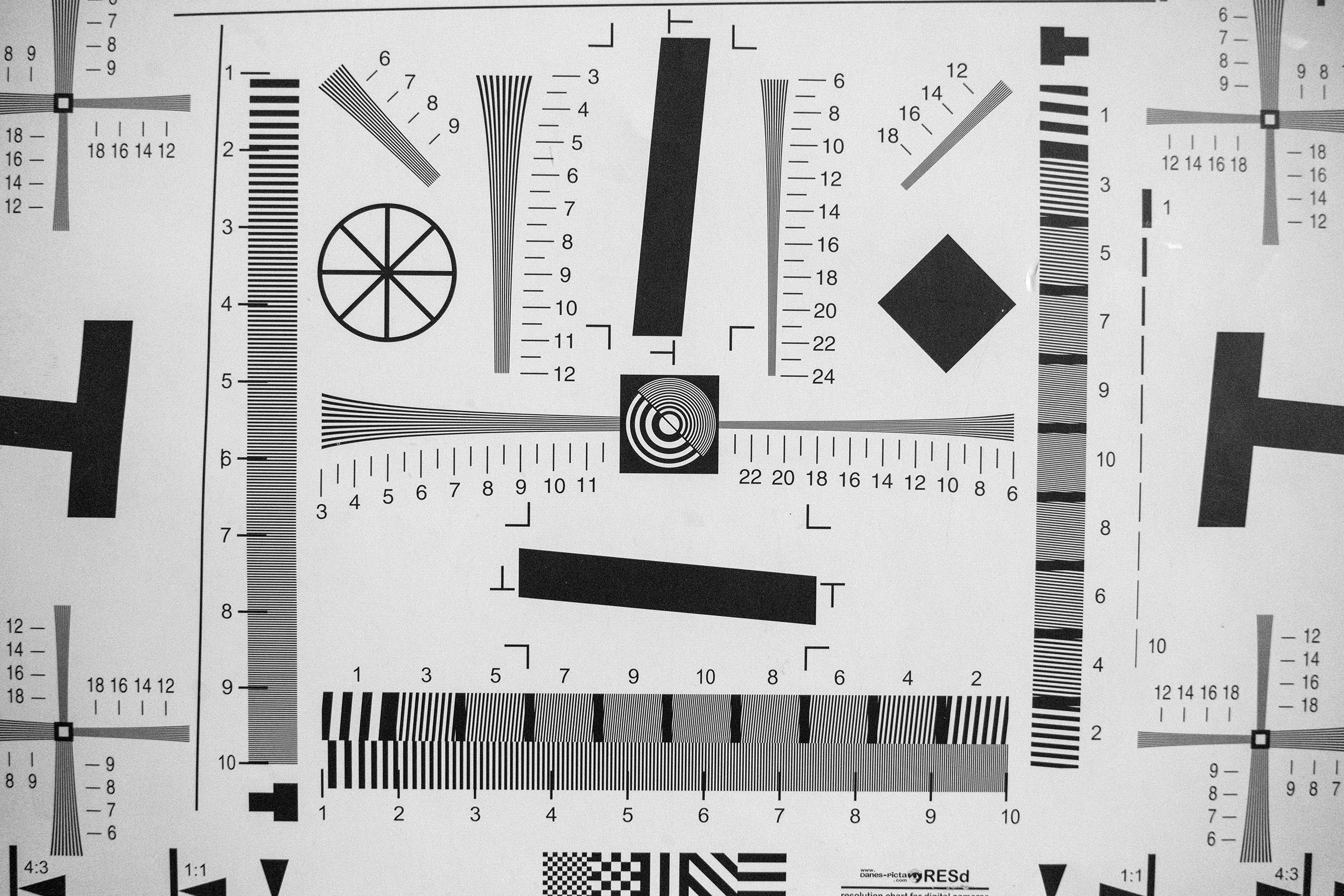
The old zoom is still excellent.
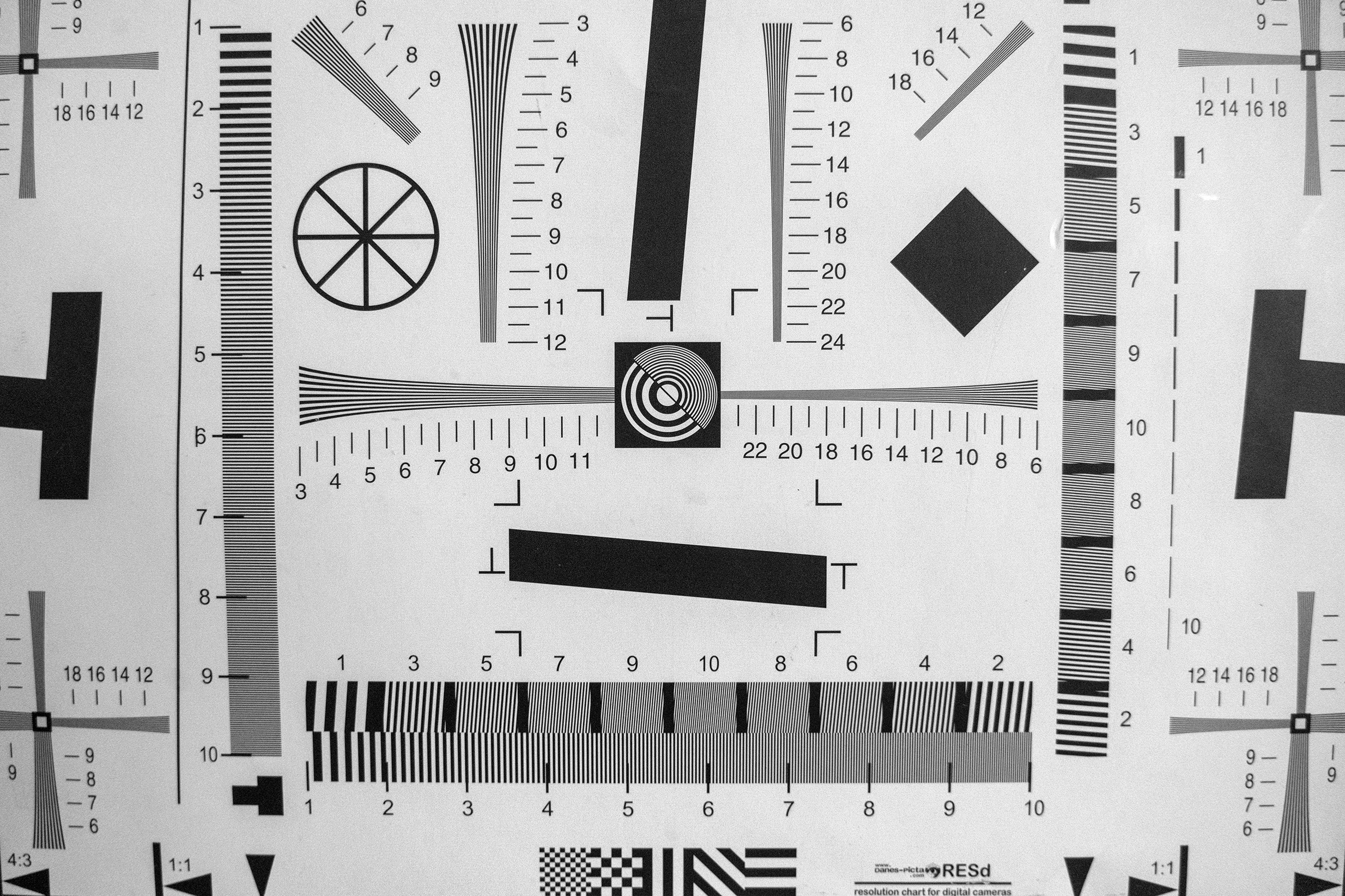
But there’s less distortion at 16mm here, and there’s smoother sharpness in the corners at f/2.8. Vignetting – light loss in the corners at full aperture – is significantly better on the new version.
You can see it better on test plates than in “real life”, but the difference is there. There is probably less difference in the degree of chromatic aberration, which was and is low, but I think the new one is less sensitive to stray light, which I guess is due to a combination of a smaller front element and a better anti-glare coating.
With 11 iris slats it is also possible to get a finer bokeh effect, which is especially desirable for portraits, for example, where the background is blurred with a more even spread.
Conclusion
The new XF16-55mm f2.8 R LM WR II may be the answer to a question no one has asked, but once it’s here, we have to take a bow and thank Fujifilm for making the zoom. As its predecessor was in its day, the new one is right up there in the reference class for a normal zoom, and by far the best zoom lens in Fuji’s X system. It is, however, 60 percent more expensive than the XF16-50mm f2.8-4.8 R LM WR, which is also a new design, but if you compare it to Canon, Sony or Nikon’s equivalent normal zoom, the Fuji zoom looks like a bargain.

We think
Compact, lightweight, bright and sharp. Weather-sealed, silent shutter for video recording. One of the best normal zooms we've tested. No image stabilization in the lens.
1399 €
Specifications
- Type: Normal zoom
- Focal length: 16-55mm, 24-84mm in 35 format
- Aperture: f2.8-22, 11 blades
- Mount: Fujifilm XF
- Image stabilizer: No
- Close-up limit: 30 cm, 0.2x
- Filter diameter: 72 mm
- Lens elements: 16 total, 11 groups
- Dimensions/weight: Ø 78 mm, 95 mm, 410 grams
- Other: Lens hood, Weather sealing, Lens hood with switch
- Web: fujifilm.com
